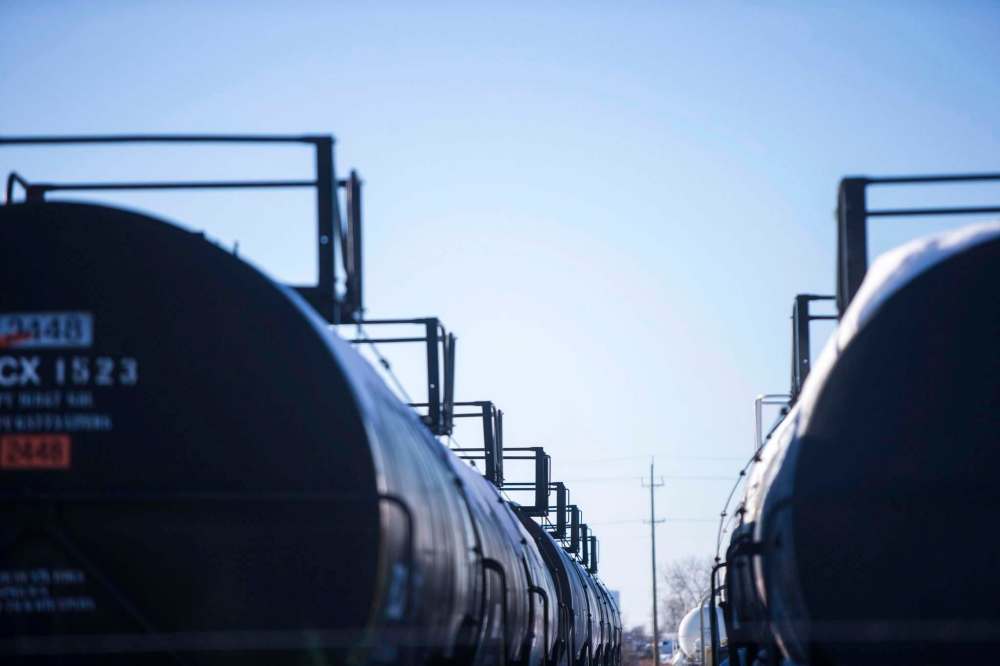Railway Association defends safety record
Advertisement
Read this article for free:
or
Already have an account? Log in here »
To continue reading, please subscribe:
Monthly Digital Subscription
$0 for the first 4 weeks*
- Enjoy unlimited reading on winnipegfreepress.com
- Read the E-Edition, our digital replica newspaper
- Access News Break, our award-winning app
- Play interactive puzzles
*No charge for 4 weeks then price increases to the regular rate of $19.00 plus GST every four weeks. Offer available to new and qualified returning subscribers only. Cancel any time.
Monthly Digital Subscription
$4.75/week*
- Enjoy unlimited reading on winnipegfreepress.com
- Read the E-Edition, our digital replica newspaper
- Access News Break, our award-winning app
- Play interactive puzzles
*Billed as $19 plus GST every four weeks. Cancel any time.
To continue reading, please subscribe:
Add Free Press access to your Brandon Sun subscription for only an additional
$1 for the first 4 weeks*
*Your next subscription payment will increase by $1.00 and you will be charged $16.99 plus GST for four weeks. After four weeks, your payment will increase to $23.99 plus GST every four weeks.
Read unlimited articles for free today:
or
Already have an account? Log in here »
Hey there, time traveller!
This article was published 15/01/2019 (2525 days ago), so information in it may no longer be current.
At the Railway Association of Canada (RAC), we always welcome scrutiny of the operations of the more than 50 freight and passenger railway companies we represent. Those companies are part of the fifth-largest rail network in the world, and the backbone of Canada’s transportation system. They employ more than 31,000 Canadians who work together to move more than $280 billion worth of goods across our country each year — that’s close to 70 per cent of all surface goods, and half of the county’s exports. They do it all with remarkable efficiency, and with a continual focus on operating safely and responsibly.
In the interest of fairness and balance, here’s context that every resident of Winnipeg — and indeed, Canada — should know about the country’s rail industry.
● Canadian freight railways are the safest in North America. A statutory review of railway safety was completed just last year by an independent panel and found that rail in Canada is safe. According to the latest information published by the Transportation Safety Board, 2017 was our safest year on record.

● Canada’s freight railways transport everything. From our cars to our clothes to the chemicals that keep our community pools clean — it all moves safely by rail. In fact, rail is the safest way to move commodities over land.
● RAC and its members have long advocated for more robust tank car standards. Last fall, RAC welcomed Protective Directive 39, issued by Transport Minister Marc Garneau. It accelerated the phase-out of older, less crash-resistant models of tank cars used to transport crude oil and condensates.
● Our railways invest heavily in safety-related infrastructure and technology. In 2018, railways invested a record $5.1 billion in capital infrastructure improvements such as new railway tracks, ties and ballast, and in innovation to detect potential risks across their network and rolling stock. Track geometry systems and infrared detectors to identify warm or hot wheel bearings are just two examples of the technology railways deploy every day to improve safety. They also invest heavily in their people, providing advanced technical training and promoting a rigorous safety ideology. CN and CP maintain world-class training facilities in Winnipeg and Calgary, respectively.
● Canadians have been living and working around trains since the railway tied the country together. As communities evolve, commercial and residential development can bring people closer to active rail operations, sometimes generating complaints. It’s the byproduct of a vibrant, growing economy and country. While there’s rarely an easy solution, RAC and the Federation of Canadian Municipalities are building common approaches to resolving issues that may arise when people live and work in close proximity to railway operations. We encourage municipalities to adopt the guidelines as a means to advancing rail safety in Canada.
● Finally, with respect to worker fatigue, RAC has long advocated that fatigue is a matter requiring empirical evidence and scientific support. In collaboration with our member companies, we will continue to work with all stakeholders to make improvements that will meaningfully enhance rail safety.
One-off anecdotes and stories might make for good headlines, but when it comes to data and year-over-year performance, Canada’s railways are safe and getting safer.
Marc Brazeau is president and CEO of the Railway Association of Canada.
History
Updated on Wednesday, January 16, 2019 10:56 AM CST: changes misused word responsibility to responsibly






